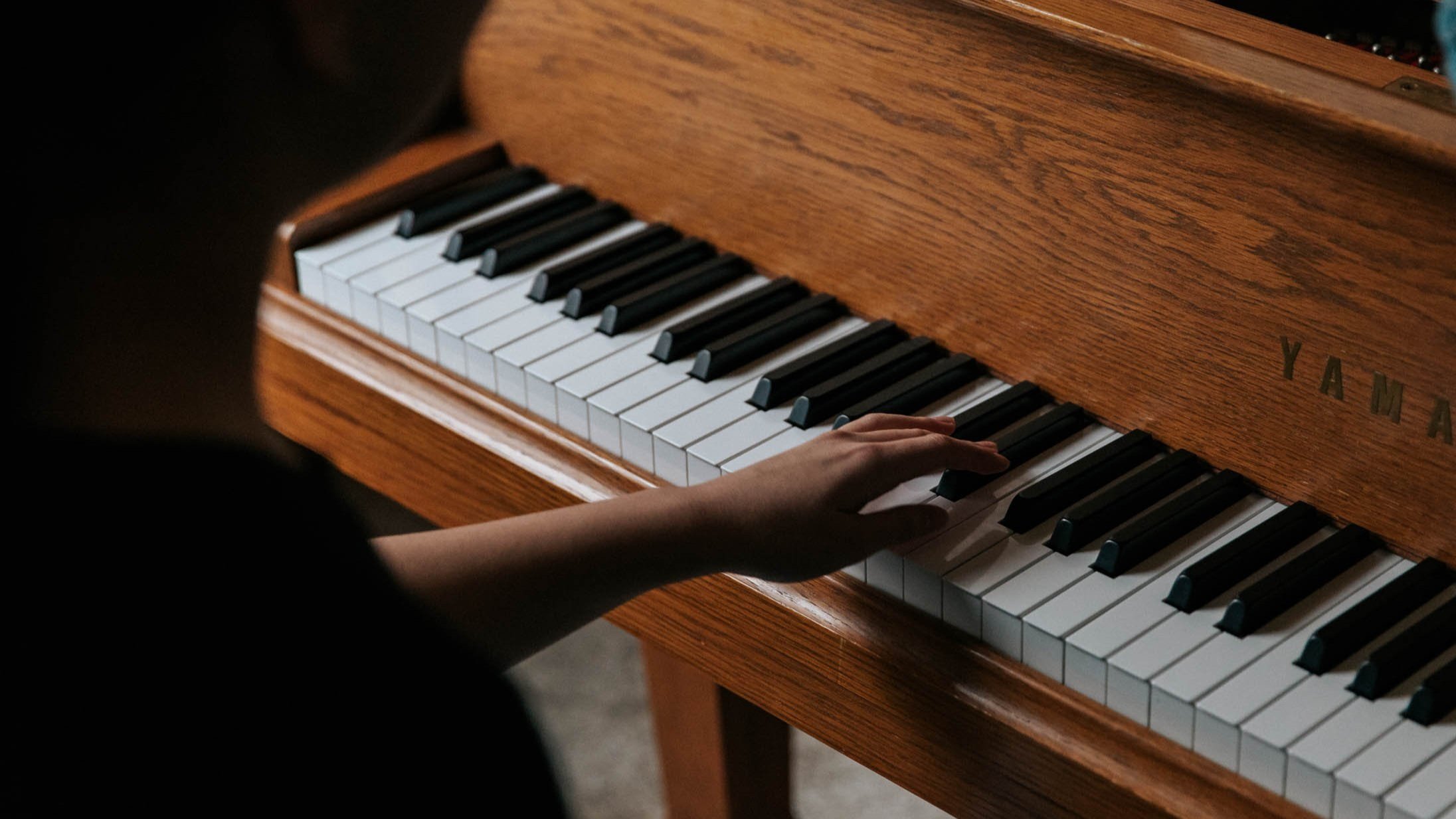
SIX TIPS: Solve any technical problems within a piece
The next of my Six Tips to Ensure Your Student is Ready for a Performance is to solve any technical problems within a piece. You can’t perform a piece well if you can’t technically manage to play it!
While the intent of this post is not to advocate for one technical system or another, I can say from years of adjudication experience that students who play with freedom and ease of movement are the ones who are most free to play expressively, and therefore have a “successful” performance.
Remember - technique is not…
SIX TIPS: Allow enough time for preparation
The next of my Six Tips to Ensure Your Student is Ready for a Performance is to allow enough time for preparation. Less experienced teachers often underestimate how long it truly takes for students to be ready to perform at their highest potential.
Of course, it is also the student’s responsibility to practice regularly and avoid procrastination…
SIX TIPS: Choose appropriate repertoire
One of the best ways to ensure that your student will be ready for an upcoming performance is to choose appropriate repertoire. This is the first in my series of Six Tips to Ensure Your Student is Ready for a Performance. You can read an overview of all six here.
But what do I mean by “appropriate”?
Ensemble Recitals - So Much Fun!
Have you ever run an ensemble recital for your piano students? You know, duets and trios? (Or maybe even duos if you had access to two pianos?!)
For many years, I have run one recital per year that is entirely made up of ensemble repertoire. The pandemic threw a wrench in those usual plans, but I’m thrilled to say that this past weekend we started up the tradition again after two years off. Most students play one piece, and most of the pieces are piano duet (1P4H). If you follow me on Instagram or Facebook, you might have seen the three videos this week I posted of highlights from that recital.
I think I can safely say it’s my favorite performance event of the entire teaching year.
30 Practice Strategies to Make Your Students Invincible Under Pressure
egular practicing and practicing for performance are two different things.
Anyone who has taught piano for more than a minute knows that most students (unless they have a lot of self-discipline) will simply play through their pieces and call it “practice.” However, doing this will not ensure reliable performance under pressure for most intermediate and advanced students.
So, we have to teach our students practice techniques that will
What is "performance anxiety?"
As musicians and teachers, I would bet a LOT of money that there is not one single reader of this post who has not dealt with “performance anxiety” or “nerves” or “stage fright” (choose your favorite term). We have all dealt with it ourselves - as students, amateurs, or professionals - or as teachers working with students.
But before we can really learn to deal with it, either for our own good or for that of our students, we must first understand what it is. We also need to be able to understand it well enough to explain it to our students and their parents, so that we all can recognize that the physical and mental reactions to the pressure of performance are normal and to be expected.
How To Teach Bach Invention No.14
Today in our How To Teach Intermediate Piano Repertoire series we are looking at Bach’s Invention No.14 in B-flat Major. I prefer to use this one as a student’s second invention, after learning either No.1 in C Major or No.8 in F Major.
How To Teach Beethoven Sonata Op.49, No.2
Today we’re talking about how to teach the first movement of the Sonata in G Major Op.49, No.2 by Ludwig van Beethoven. This is a “light” sonata with a bright, happy feel. In my opinion, this is the easiest Beethoven sonata movement. Click here for my blog post and video all about the EASIEST Beethoven Sonatas.
How To Teach Grieg Watchman's Song
Today we’re talking about how to teach Watchman’s Song Op.12, No.3 by Edvard Grieg. This is an evocative piece from his larger set of Lyric Pieces.
How To Teach Play by Bartók
Today we’re talking about how to teach Play, which is the fifth piece in Béla Bartók’s For Children Volume 1. This is a fun early intermediate piece with two very contrasting sections.
How To Teach Bach Little Prelude in C Minor
Today we’re talking about how to teach the Little Prelude in C Minor, BWV 934, by Johann Sebastian Bach. This is a beautiful piece that can help our students learn to play Baroque music expressively.
How To Ensure Your Student is Ready for a Performance
If you didn’t see my announcement already, I have a new course launching next Thursday. More info can be found at this link, but the course will be all about preparing our students for performance and creating a healthy, positive performance culture in our studios.
To that end, I have six things I do every time I help a student prepare for a recital, exam, festival, competition, or any other performance, no matter how formal or informal it is.
Choose appropriate repertoire,
How To Teach Satie Gymnopedie No.1
Today we’re talking about how to teach the first Gymnopedie by Eric Satie. This is a beautiful piece that ranks in the top list of most-recognized piano pieces. To that end, I have included it in my curated listening list, Piano Pieces Every Piano Student Should Know. If you have not already downloaded that, please click here.
One thing that I could have stated more explicitly in the video is this:
How To Teach Crimson by Robert Starer
Today we’re talking about how to teach the Crimson from Sketches in Color by Rober Starer. I’m also using this piece as a jumping off point for discussing mixed meter and asymmetrical meter. Be sure to watch or read to the end where I give my #1 piece of advice on teaching students music in the 20th century idiom with “unusual” sounds.
Should piano students memorize their repertoire?
Should piano students memorize their repertoire?
This is a controversial question! I’m here to give you my answer after over 20 years of experience. However, I always encourage every teacher to adapt anything that I say to his or her individual context and teaching style, as well as to the individual student arriving for a lesson each week.
My short answer is yes. Continue reading or watch the video below to find out why.
How To Teach Bach Little Prelude in C Major
Today we’re talking about how to teach the Little Prelude in C Major, BWV 939 by Johann Sebastian Bach. This is a grand, authoritative prelude that packs a lot of punch in just a few measures.
How To Teach Mendelssohn Venetian Boat Song Op.19, No.6
Today we’re talking about how to teach the Venetian Boat Song Op.19, No.6, by Felix Mendelssohn. This is one of the 48 lovely Songs Without Words that Mendelssohn composed for piano solo, and one of the few attainable by a mid- to upper-intermediate student. It’s a beautiful, melancholy piece that students love to play.
How To Teach Mozart Minuet in F Major, K.2
Today we’re talking about how to teach the Minuet in F Major, K.2, by Wolfgang Amadeus Mozart. This is a great example of a standard early intermediate dance from the Classical era. Mozart is deceptively difficult; it seems so easy! Hopefully some of my ideas here will help your students play more beautifully and expressively the next time they encounter his intermediate pieces.
How To Teach Kuhlau Sonatina Op.55, No.1: Second Movement
Today we’re talking about how to teach the first movement of Sonatina in C Major Op.55, No.1 by Friedrich Kuhlau. This is a great example of a standard intermediate level classical sonatina movement and one that students enjoy playing. It is also a frequent exam choice.
Pedagogical Principles You (Probably) Never Learned in School
Please join me in welcoming the author of this guest post, Christina Whitlock. Christina is the genius behind the Beyond Measure Podcast. I regularly joke that I cannot listen to any episode of hers without shouting “Amen!” multiple times. Do check out her podcast, and enjoy her contribution below.
Hello, studio teacher friends!
It is an honor to be writing for Janna’s blog, as she is SERIOUSLY one of my favorite people in the entire world. I’ve been teaching a full studio since age 14, which means I’ve been at this gig for a solid 27 years now. I’m a die-hard advocate for lifelong learning, and have found a sweet spot in cyberspace for connecting with teachers over some of the less-obvious aspects of studio teaching. I began this article with a list of twenty (!) lessons not typically taught in pedagogy courses, but (because I’m also a firm believer that “less is more”) I narrowed it down to three.


















